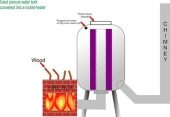posted 14 years ago
Actually, water ain't that great as thermal mass.
It does have a high specific heat, which looks good at first..
The biggest problem with water is that the phase change temperature of water is comparatively VERY low.. You can't get much heat into it before it turns to steam, which is quite dangerous. Also, it tries to get out of whatever you put it in and given enough time, it WILL find a way.
'Course, the advantage is that it can be pumped around.
I don't know what the specific heat of cob is, probably not very high compared with water. The advantages of cob though completely outweigh this one disadvantage. Those being that it can be made into ANY shape, it's SUPER cheap, non flammable, provides decent thermal mass, is very easy to work with and more.
Build it yourself, make it small, occupy it.










